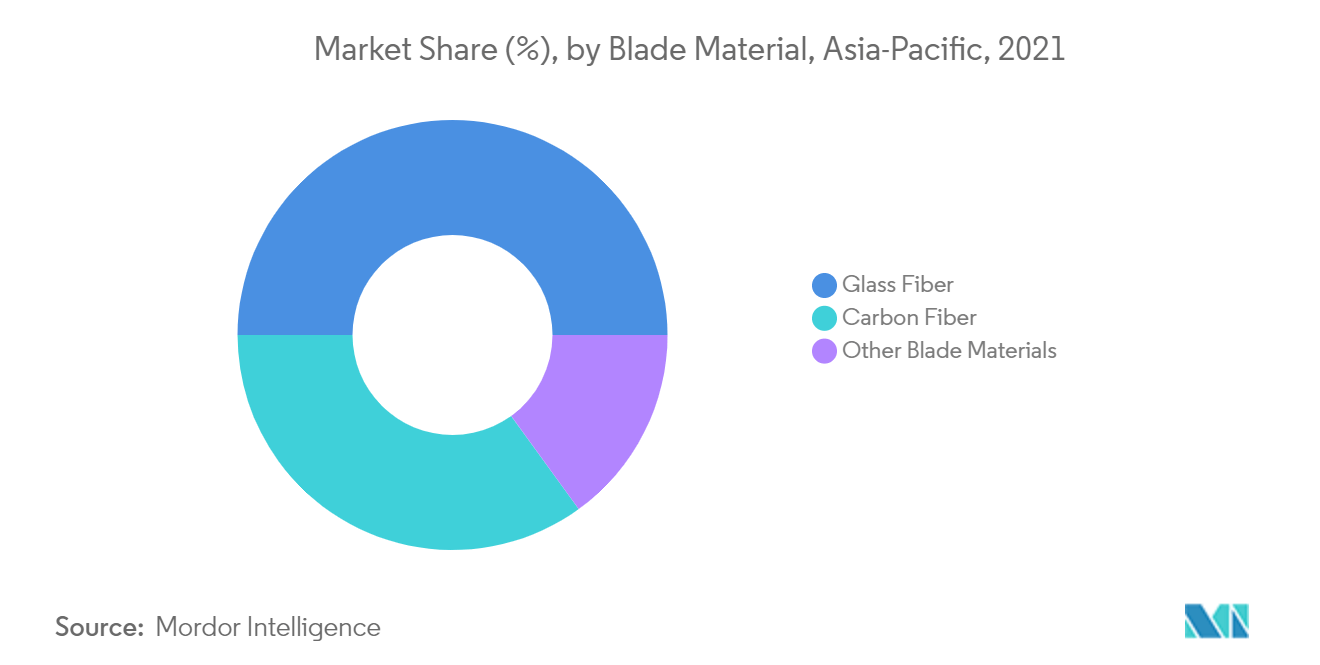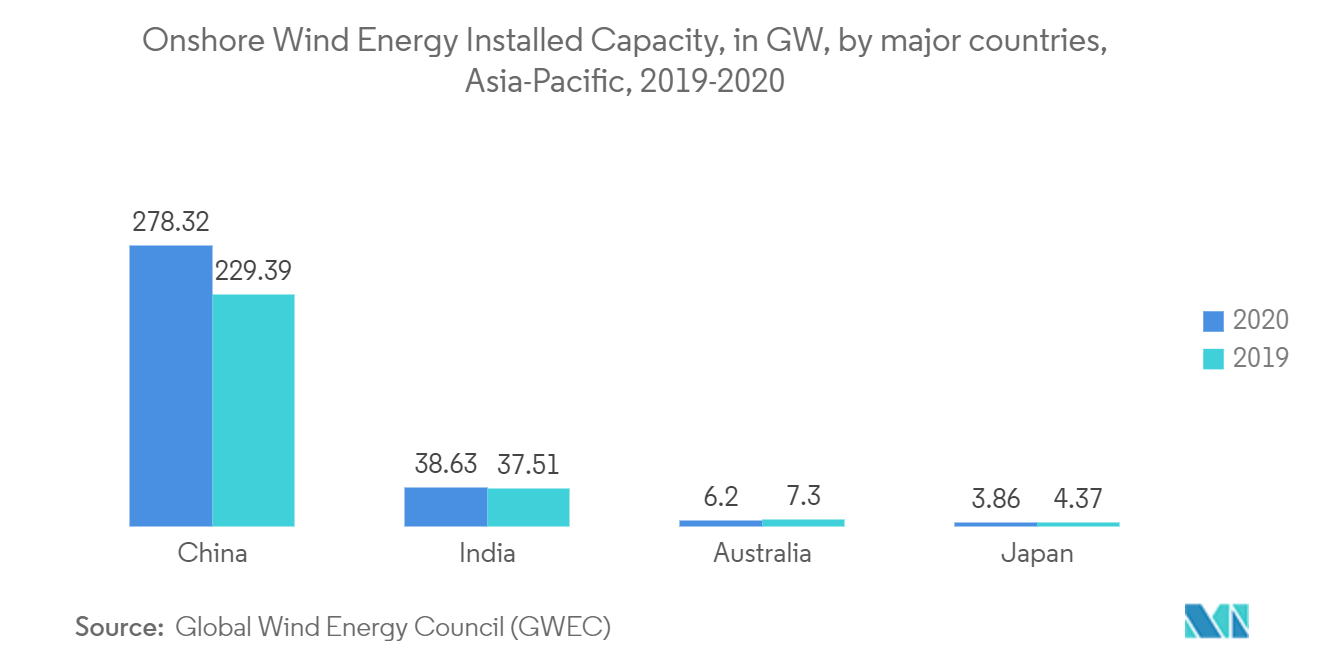Market Trends of Asia-Pacific Wind Turbine Rotor Blade Industry
This section covers the major market trends shaping the APAC Wind Turbine Rotor Blade Market according to our research experts:
Glass Fiber Blade Material to Witness Significant Growth
- The majority of the modern rotor blades on large wind turbines are made of glass fiber reinforced plastics (GRP), which is glass fiber reinforced polyester or epoxy. Glass fibers have higher density and are, therefore, heavier than carbon fibers.
- Apart from GRP, the wind turbine blades also contain sandwiched core materials, such as polyvinyl chloride foam, polyethylene terephthalate foam, or balsa wood, as well as bonded joints, coatings (polyurethane), and lightning conductors.
- As of 2020, the wind power industry was the largest market for glass fiber-reinforced composites. Glass is an inexpensive material to use, especially when compared to other popular-use composite materials, such as carbon or aramid fibers. Additionally, glass fiber does not corrode as metals do, therefore, it requires less maintenance and is an overall more cost-effective solution. These are the significant advantages for a wind turbine to have, since they are constantly exposed to the elements, both, on land and at sea.
- Typically, E-glass fibers (i.e., borosilicate glass) are used as the main reinforcements in the composites. S-glass and R-glass are the modified compositions of high-strength glass fibers. S-glass (high strength glass, S means “Strength”) exhibits 40% higher tensile and flexural strengths and 10–20% higher compressive strength and flexural modulus, compared to E-glass.
- Glass fiber represents the primary material in wind turbine blades. Some of the leading blade manufacturing companies, such as TPI Composites and LM Wind Power, rely on third parties for their raw materials. The glass fiber raw materials are mostly available in multiple geographic regions and reasonably proximity to the manufacturing facilities.
- Therefore, based on the above-mentioned factors, glass fiber blade material is expected to witness significant demand for the wind turbine rotor blade market in the Asia-Pacific region during the forecast period.

China to Dominate the Market
- The Asia-Pacific region is the regional hotspot for the wind turbine rotor blade market, owing to governmental support, numerous incentives, and national targets. As of 2020, the total installed wind power generation in the region reached 572.6 TWh, representing an increase of 12.41% over the previous year.
- Since the invention of the modern wind turbine generator (WTG) in 1891, China has recognized that wind energy technology offers an effective way to provide electricity to rural and isolated areas. China’s installed wind capacity has grown from a mere 4 MW in 1990 to 281.99 GW by the end of 2020 as a result of policy reforms, dedicated R&D initiatives, new financing mechanisms, and clear goals in the most recent Five-Year Plans.
- Both China's installed capacity and new capacity in 2020 are the largest in the world by a wide margin. According to IRENA, China is expected to continue to dominate the onshore wind power industry, with more than 50% of global installations by 2050. Also, due to the high population, high electricity demand in the country is expected to promote growth in wind energy. Many multinational corporations, including Chinese firms, are investing in this sector with the help of the federal and provincial governments across the country.
- The Chinese onshore wind market is expected to grow steadily in the coming years, with rising needs for key components and materials, not only for the national market but also for international exports. Besides, in China, nearly 70% of the electricity produced is from thermal sources of energy. Owing to the increasing pollution from thermal sources, the country has been making efforts to increase the share of cleaner and renewable sources in power generation. Furthermore, out of the total 6.1 GW installed offshore worldwide, 50% of the installations were from China in 2020 and the total offshore capacity of China stood at 9.884 GW.
- Therefore, all of this indicates that China is expected to be the largest market for wind turbine nacelle in the Asia-Pacific region.

